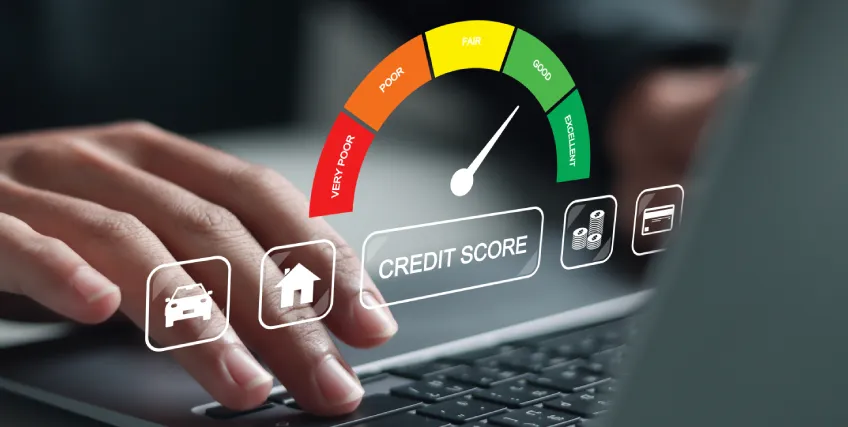Fixed vs Variable Commercial Construction Loans Rate: Which Should You Choose?
October 10, 2025 | Last Updated on: October 10, 2025

Choosing between a fixed or variable commercial construction loan rate is one of the most consequential decisions for any developer, investor, or business owner embarking on a new build or major renovation.
The nature of construction loans makes the choice between fixed and variable rates far more than an academic preference or a simple cost-saving exercise. It impacts risk, budgeting, and the project's long-term viability.
With today’s market volatility and evolving interest rate environment, lenders and borrowers alike pay close attention to these terms. Understanding the current landscape of commercial construction loan rate options and how each type aligns with unique project and financial needs is vital.
Understanding Commercial Construction Loans
For developers and businesses looking to start a new venture, relocate, or expand, commercial building loans may be ecessary to bring their drawings to life. In contrast to permanent real estate financing, construction loans release funds in stages, corresponding with construction milestones, making them distinctive in terms of structure, cost, and risk exposure.
Traditionally, construction financing is more expensive than a commercial construction loan rate for any other purpose. It typically has shorter durations, greater uncertainty, and value based on eventual completion, rather than existing property equity.
With the advent of economic cycles came more commercial construction loan rate choices, making it easier for borrowers but also more complex. The choice of the type of rate is the beginning of budgeting, project feasibility, and long-term financial health. Fixed rates and variable rates behave differently as the market fluctuates, affecting costs and risk in distinct ways.
Understanding Fixed Commercial Construction Loan Rates
A fixed commercial construction loan rate is a rate that remains constant over the loan term. Monthly principal and interest-only payments remain stable, regardless of fluctuations in prevailing market rates or Federal Reserve policy initiatives. In times of economic uncertainty or rising interest rates, fixed-rate loans offer borrowers invaluable predictability. Knowing exactly what payments will be can simplify budgeting, safeguard cash flow, and cushion the project from adverse rate movements.
Fixed rates are desirable in stable or rising interest rate environments. Those developers with multi-year construction plans typically opt for fixed rates to hedge against potential increases in commercial real estate loan rates. Fixed rates have varying prices among lenders, depending on factors such as credit score, creditworthiness, loan-to-value (LTV) ratios, and the complexity of the construction project. When rates are at historical lows, securing a fixed rate can be a strategic benefit, as it protects the project from future increases that can erode margins and strain budgets.
Fixed rates are not always the lowest to begin with, however. Lenders factor in a premium for assuming more interest rate risk over the life of the loan. This can result in the upfront rate being slightly higher than that of a comparable variable loan product, which can increase upfront costs.
The Allure and Risk of Variable Construction Loan Rates
Products with variable rates for commercial construction loan rates move in unison with a benchmark index, such as the prime rate or LIBOR, plus a lender's margin. The borrower can, and likely will, experience changing monthly payments over the life of the loan programs.
For projects anticipated to reach a quick end or refinance immediately after construction, variable rates can offer substantial savings in the short term, particularly in a declining loan interest rate environment. Variable rates appeal to borrowers who have a higher risk tolerance and feel that rates will remain flat or decline.
Newer business owners, seasoned developers, or businesses with flexible or malleable cash flows may prefer this structure to capitalize upon initial lower down payments. Taking a variable rate exposes itself to a degree of risk - if market rates suddenly increase, the monthly cost obligated in the terms of the commercial construction loan rate can simultaneously jump up a level or more. This could squeeze budgets and reduce profitability.
Therefore, all borrowers who use variable rates must be very aware of the forward trends of pricing and be positioned to withstand changing monthly payments resulting from variability. Variable rates can tart at a lower value than fixed rates, but the overall fluctuating nature makes these terms less desirable in an upward rate cycle or for projects with a limited profitability margin.
Lenders may also impose caps/collars to restrict the maximum rate that can be adjusted in the future, so that both parties limit the risk exposures. However, even with these controls, uncertainty persists regarding future costs that may vary.
Factors That Influence the Choice
When choosing between a fixed or variable rate for a commercial construction loan rate, it is essential to consider the project’s timeframe holistically. You should also evaluate your long-term construction loan strategy and the broader macroeconomic factors. Together, these elements will help determine the most suitable rate type. Several key factors will determine the intended rate type.
The forecasted project duration can be a main factor for consideration. A short-term build that is paid off quickly with permanent financing may benefit from a variable rate, which has low start-up costs. A longer project timeframe or an uncertain market may lean towards a fixed rate, which provides stability during an unpredictable construction schedule. The possible timing of a commercial real estate refinance also matters.
For many construction lenders, the loan will be paid off or converted into a permanent mortgage upon completion of the project. Borrowers should consider their best guess for commercial refinance rates and whether to lock a rate before refinancing or wait until the business loan is due.
A borrower should also consider trends in commercial real estate loan rates. If commercial forecasts indicate rising rates, securing a fixed loan option may be the best hedge for the higher fixed upfront cost. If rates are at an all-time high and analysts suggest a recession or rates will decline, a variable-rate product may offer savings that are not available in a fixed-rate structure.
Comparing Total Costs and Budget Risks
A project pro forma requires estimating the true cost of fixed versus variable rates for any project. While fixed rates offer certainty, variable rates require stress-testing budget models to different potential rate scenarios. Such commercial real estate loan rates calculators on the web can be used by borrowers to model future payments, value sensitivities, and establish risks under different rate environments.
Borrowers must consider their project size, expected cash flow, and margin for error, taking into account how payment fluctuations could impact both short-term construction budgets and long-term profitability. Those with thin profit margins or low debt service coverage ratios tend to benefit the most from fixed-rate products, as they help avoid unwanted surprises.
Types of Commercial Real Estate Loans in the Mix
Choosing a rate structure is also influenced by the broader array of commercial construction loan rates available to developers and business owners, which extends beyond construction lending. The options span from traditional permanent mortgages to bridge loans, mezzanine debt, and even government-sponsored options, such as Small Business Administration loans. Each has its own rate trends, qualification requirements, and risk profile.
Construction-to-permanent loans, which convert from an interest-only construction loan to a permanent mortgage once the project has been completed, can lock in rates for the life of the loan or remain variable until stabilization. Bridge loans, used for short-term gap financing, are usually variable but sometimes offered with short fixed-rate periods.
One should consider the connection between commercial construction loan rates and permanent financing or commercial real estate refinance loan rates. Borrowers must speculate about what rates will be at refinance time, and how the rate decision today will impact future costs and flexibility.
The Role of Commercial Real Estate Refinance and Rate Locking
Most commercial construction loan rates are designed to be transitional, with the intention of refinancing the property into permanent financing after construction is completed. You should explore how the initial commercial construction loan rate and rates to refinance the commercial property will impact each other.
If a borrower secures a fixed rate, they will enjoy rate stability but may miss out on lower future refinance rates. If a construction loan borrower uses a variable rate, they may want to closely monitor the market to determine the best time to refinance and maximize long-term savings.
It is also useful to understand the available commercial refinance rates for potential project owners who may plan to sell or lease the property in the future. The simple ability to refinance into better rates, either fixed or variable, can drastically change the profitability and cash flow profile of the project.
Strategic Guidance: Which Should You Choose?
Choosing between a fixed and variable commercial construction loan rate is more than a simple two-way decision; it is one that depends on the project's objectives, risk tolerance, and uncertainties.
Fixed loans remain a popular choice most long-term or high-cost projects, with their accompanying payment stability and protection against rate volatility. This is especially applicable in market cycles when rates are anticipated to rise, budgets are tight, or the project's financial model cannot sustain unexpected jumps in debt service.
Variable rates, on the other hand, may suit those with a keen understanding of the market, elastic budgets, or projects likely to refinance or sell soon. If market rates are high but potentially will decrease, a variable alternative may generate short-term savings, if the borrower can cope with risk if rates surge unexpectedly.
Ultimately, every rate structure has its place in commercial real estate lending. The shrewd borrower weighs the pros and cons, uses facts and calculators to make mockups, and plays stability against speculation based on their own situation and market outlook.
Final Thoughts on Rate Selection
With the business construction market becoming increasingly complex, being reflective and deliberate about rate choices has never been more important. Understanding how commercial construction loan rate options, both fixed and floating, work is even more critical for borrowers to strike a balance among financing option terms, business objectives, risk tolerance, and the realities of shifting real estate markets.
Utilizing commercial construction loan rate calculators, responding to market trends, and preparing for commercial real estate refinance opportunities ensures a strategic approach that prioritizes business interests. Choosing the most suitable type of rate is an art and science, requiring deep insight, vision, and financially disciplined modeling.
Developers and business executives must partner with professional lenders, examine all commercially available types of commercial real estate loans, and become data-driven decision-makers. In doing so, they are building the foundation not just for successful constructions but for long-term financial prosperity, making the right commercial construction loan rate decision a building block of project success.
FAQs About Commercial Construction Loan Rate
1. Are most commercial real estate loans fixed or variable?
Some CRE loans may have fixed rates, where the interest rate remains constant throughout the loan term. However, a significant number of commercial real estate loans are variable-rate loans. A variable interest rate is tied to a market index that fluctuates in value. The date at which the interest rate resets is stated in the mortgage note.
2. Should I choose a fixed or variable interest rate?
The best rate will vary widely on your own financial situation. A fixed rate can give you a consistent monthly payment while a variable rate can allow you to potentially take advantage of lower rates.
3. What are the cons of a variable rate?
The greatest disadvantage of variable rates is the uncertainty they create. If market rates rise, your interest rate and monthly payments will also increase, which could potentially strain your finances. With variable rates, it is significantly more challenging to accurately forecast your long-term costs and incorporate them into your budgeting process.
4. How do commercial construction loans work?
With a standard-type commercial construction loan rate, the borrower will only pay interest on the amount of the loan that has been disbursed until construction is completed. Once the amount has been disbursed from the construction loan amount, the borrower will need to pay back the principal.
5. What are fixed and variable costs in construction?
Fixed costs are those expenses that remain constant regardless of the amount produced by a company, such as rent, property taxes, insurance, and depreciation. Variable costs are expenses that fluctuate in relation to the quantity produced and sold by a company, such as labor, utility costs, commissions, and raw materials.
Frequent searches leading to this page
Related Articles
Term Loans are made by Itria Ventures LLC or Cross River Bank, Member FDIC. This is not a deposit product. California residents: Itria Ventures LLC is licensed by the Department of Financial Protection and Innovation. Loans are made or arranged pursuant to California Financing Law License # 60DBO-35839




